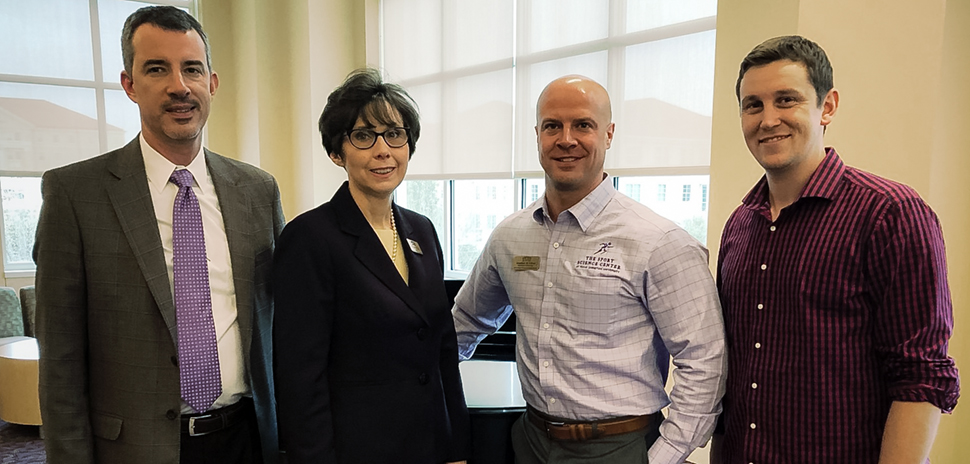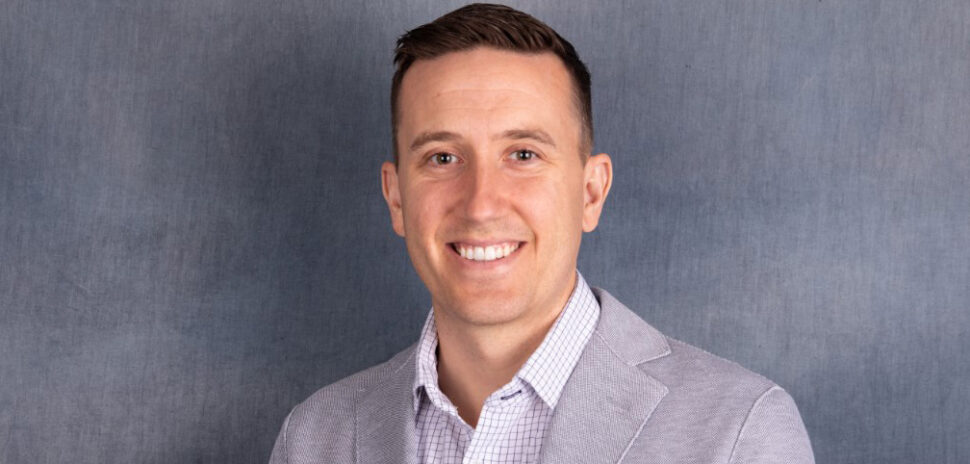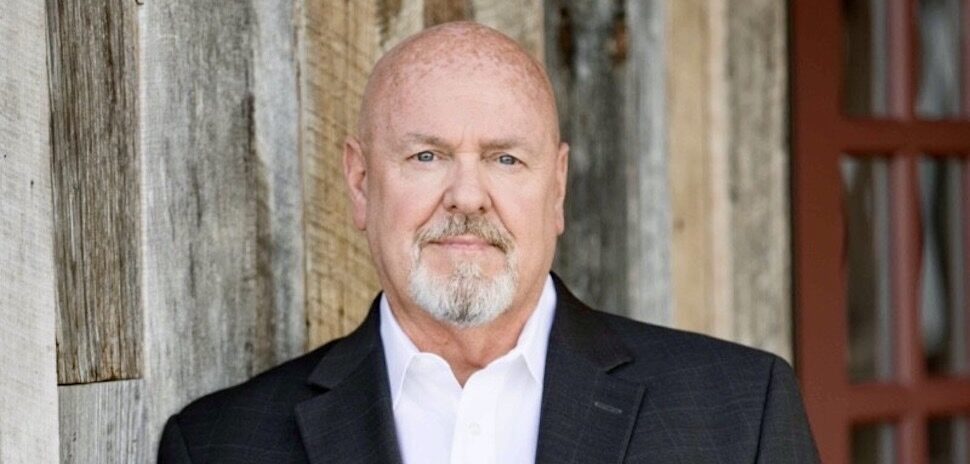SWAY MEDICAL, TCU SPORT SCIENCE CENTER PARTNER ON RESEARCH
![]() Sway Medical and Texas Christian University’s new Sport Science Center have agreed to a multiyear partnership that will support research at the center.
Sway Medical and Texas Christian University’s new Sport Science Center have agreed to a multiyear partnership that will support research at the center.
Sway will provide a three-year financial commitment to the center with an unrestricted recurring grant, Sway said in a news release.
Sway Medical produces mobile neurological assessment software that is used by medical professionals in concussion management programs.Led by Dr. Jonathan Oliver, the Sport Science Center is part of the Health Innovation Institute at TCU in the Harris College of Nursing & Health Sciences. Its mission is to merge science and practice to improve sport performance and athlete health from the laboratory to the playing field, and vice versa.

Sway Medical screenshot.
“As a mobile medical device company, Sway is research driven and we want to be good community partners supporting growth of research institutions here in North Texas,” Sway CEO Alem Boukadoum said in a statement. “With Dr. Oliver’s longstanding focus on concussion research, we believe this relationship will support our core mission of improving outcomes.”
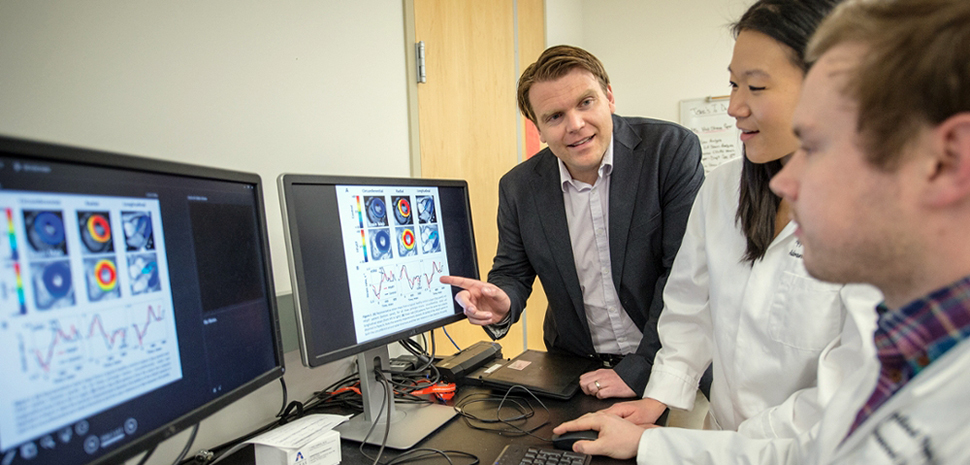
Michael Nelson is leading the UTA team studying fat levels in hearts. [Photo courtesy of UT Arlington]
UTA TEAM USING $3.3M GRANT TO STUDY FAT STORAGE IN HEART
An assistant professor of kinesiology at The University of Texas at Arlington will use a $3.3 million grant from the National Institutes of Health to study the link between fat storage in the heart as well as how gender can influence the development of cardiac dysfunction.
Michael Nelson leads a team that will explore the effects of excess fat in isolation of cardiovascular or metabolic risk factors, according to UTA.
“You’re not supposed to store fat in the heart, but patients who suffer from obesity, diabetes, or heart disease tend to store more fat in the heart.”
Michael Nelson
“You’re not supposed to store fat in the heart, but patients who suffer from obesity, diabetes, or heart disease tend to store more fat in the heart,” Nelson said in a release. “This excess fat is often linked to structural and functional abnormalities.”
“Interpretation of these data is always difficult however, because these patients also tend to have other cardiovascular abnormalities, such as insulin resistance and hypertension. Our study attempts to address this previous limitation.”
Early data shows that men may respond differently than pre-menopausal women, who appear to be protected despite having similar fat levels in their heart.
The team will spend the next five years studying 60 healthy people — 15 men and 45 women — ages 18 to 30 to determine links between different factors, the university said.
Find out more here.
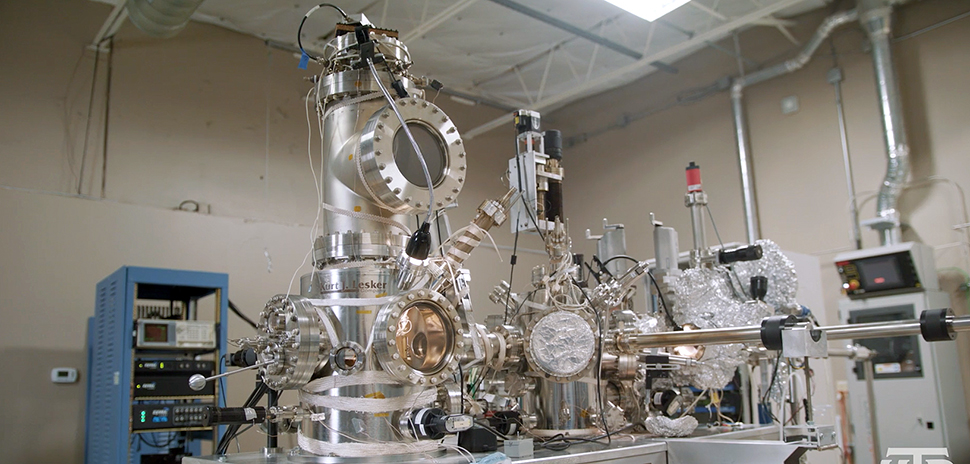
[Screenshot via UTD video]
MICROSCOPE TIP CRASHING: IS THE PROBLEM SOLVED?
For more than 35 years, scientists and engineers have wrestled with this problem — sometimes, the tip of a scanning tunneling microscope can crash into the surface of the material during imaging or lithography.
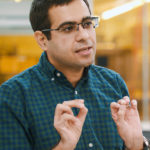
Farid Tajaddodianfar
The University of Texas at Dallas reported that a grad student at the university, his adviser, and industry collaborators may have found a way to address the problem.
It all started when Dr. John Randall, an adjunct professor at UTD and president of Zyvex Labs in Richardson, contacted Dr. Reza Moheimani, a UTD professor of mechanical engineering, for help in addressing the company’s tip-crash problem.
A scanning tunneling microscope operates in an ultra-high vacuum and brings a fine-tipped probe within a single atom at its apex very close to a sample’s surface, according to UTD. Once voltage is applied to the sample’s surface, electrons can jump or tunnel across the gap between the sample and the tip.
“Think of it as a needle that is very sharp, atomically sharp.”
Farid Tajaddodianfar
“Think of it as a needle that is very sharp, atomically sharp,” mechanical engineering grad student Farid Tajaddodianfar said in the release. “The microscope is like a robotic arm, able to reach atoms on the same surface and manipulate them.”
Tajaddodianafar figured out that the crash problem was the feedback controller that regulated how close the tip came to the sample.
You can read about his solution here.
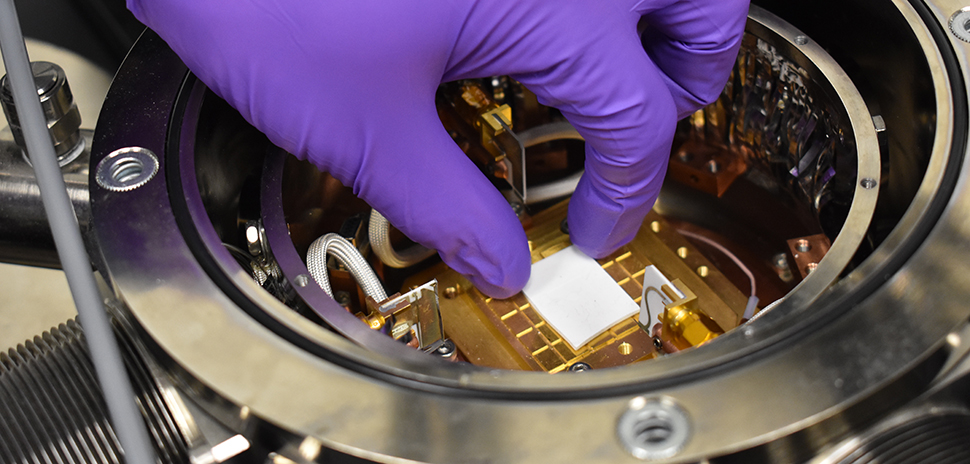
Researchers at UNT’s College of Engineering have developed a higher-power, longer-life, environmentally friendly lithium-sulfur battery alternative that could replace the lithium-ion battery. [Photo courtesy of UNT]
UNT RESEARCHERS’ CREATE LITHIUM-ION BATTERY ALTERNATIVE
Researchers at the University of North Texas College of Engineering have developed a higher-power, longer-lasting, environmentally friendly alternative to the omnipresent lithium-ion battery that powers most of our modern devices.
The UNT battery is powered by lithium-sulfur and the researchers said it could replace the lithium-ion power source, according to the university. The research was published in the journal Nature Nanotechnology.
Thee capacity of a lithium-ion battery is inadequate, Wonbong Choi, professor of materials science and engineering, said in a release.
“The lithium-sulfur battery has five times, or more, of the charge and discharge capacity of the lithium-ion battery and hopefully will eventually replace it.”
Wonbong Choi
“For example, when you charge a cellphone, you get maybe one day of use. We need higher efficiency — maybe where one charge lasts a week,” Choi said. “The lithium-sulfur battery has five times, or more, of the charge and discharge capacity of the lithium-ion battery and hopefully will eventually replace it.”
The new battery is a collaboration between Choi and three of his doctoral students — Juhong Park, Mumukshu D. Patel, and Eunho Cha — along with Vish Prasad from UNT’s mechanical and energy engineering program, and two other local scientists. They’ve applied for a patent through UNT and are working toward potential prototyping and production, according to the university.
“If the lithium-sulfur battery is produced commercially, it will be safer and cost less than the lithium-ion, have higher power density and be environmentally friendly,” Choi said. “It can also be manufactured at a large scale. The Li-S battery has been studied by many researchers, but no commercial products have been produced because of several critical problems. We have resolved those issues.”
CARIS VALIDATES NEXT-GEN SEQUENCING PLATFORM
Caris Life Sciences said it has validated its next-generation sequencing platform to detect microsatellite instability, comparing its relationship with tumor mutational burden and programmed death ligand 1.
The Irving-based company, which is a leading innovator in molecular science, detailed its work in the peer-reviewed journal Cancer Medicine.
“Traditionally MSI testing requires both normal and tumor tissue, however the Caris NGS assay only requires tumor tissue, thus reducing the burden on patients and increases the percent of time a viable result can be returned.”
W. Michael Korn
Microsatellite instability, or MSI, is the condition of having a predisposition to mutation that results from impaired DNA mismatch repair, while tumor mutational burden is the total number of mutations per coding area of a tumor’s genome. Programmed death ligand 1, also called PD-L1, is a protein that, in humans, is encoded by the CD274 gene.
In a nutshell, the study showed that determining MSI by next-generation sequencing is consistent with the traditional standard method of PCR fragment analysis, but is a more efficient and cost-effective approach to identifying patients who are candidates for immunotherapy.
“Traditionally MSI testing requires both normal and tumor tissue, however the Caris NGS assay only requires tumor tissue, thus reducing the burden on patients and increases the percent of time a viable result can be returned,” W. Michael Korn, M.D., chief medical officer of Caris Life Sciences, said in a release.
“In addition to MSI status, the Caris NGS approach provides information about tumor mutational burden and alterations in hundreds of clinically relevant genes.”
Find out more about the research here.
READ NEXT
Discovery: New Hope For Extending Brain Function, UTD Testing Unique Education Method for Physics
Discovery: REHEAL Glove Aids Healing, UNT Team Creates Revolutionary Material
Discovery: New Tech to Battle Heart Failure, Crystals Behave Unexpectedly Under Heat
![]()
Get on the list.
Sign up to keep your eye on what’s new and next in Dallas-Fort Worth, every day.

